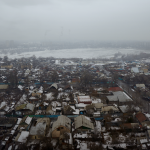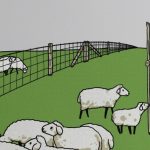Detroit has changed dramatically. Just as a nondescript caterpillar morphs into a breathtaking butterfly, sections of Detroit have been transformed from urban wastelands to thriving business and residential destinations.
And yet, while certain “targeted areas” are flourishing, most of Detroit is still struggling. The affluent share zip codes with the impoverished. Young white millennials live next door to black baby boomers. The “new Detroit” has converged on the old.
Pastor Dhati Lewis sums it up well, saying that the new urban context is marked by “diversity and density.”
These realities have affected our approach to planting a church in Detroit.
‘Plant’ Yourself
There’s no one-size-fits-all approach to gardening. Skilled gardeners work with the soil to enable the healthy growth of their crops. So it is with church planting. If we want to plant healthy churches, we must not only know the soil, we must “plant ourselves” in it.
Reaching your city begins with knowing your city.
Urban contexts are not blank canvases. Every urban area has a rich, extensive narrative and history. So our initial task is to immerse ourselves in the community, listening and learning as we do.
Do you know your city’s historical narrative? The broken systems? The spiritual climate? What idols enslave the people? Who’s faithfully serving Christ?
Reaching your city begins with knowing your city. For example, Detroit experienced three race riots between 1942 and 1967. Literal streets and walls were then constructed for “zoning” to separate the races (redlining). Consequently, this history affects how black Detroiters view the influx of other ethnicities moving to “their” city.
It’s Complicated
It’s easy to begin planting a church in theory before actually knowing the people and the context. For some reason, this seems to be especially prevalent in the hood. Stats are easily learned and rattled off, but there’s a difference between knowing stats and knowing people.
And urban life is different from suburban life. In the suburbs, life tends to be more monochromatic. Not so in the hood. Where I live, you’ll find people from all over the socioeconomic and racial spectrum. The diversity of people and places in the hood makes ministry complex.
None of this changes the hood’s greatest need: the timeless gospel of Jesus Christ. Knowing your context is important because you want to bring gospel truth to bear on people’s lives.
It’s easy to begin planting a church in theory before actually knowing the people and the context.
For example, Doug Logan encourages people to approach urban ministry with a “sit, soak, and serve” mentality. Be a godly neighbor. Ask questions. Show hospitality. Love the people and the place God has called you to. As you do all of this, point people to the Savior who came for the least, the last, and the lost.
Without gospel-centered, Spirit-led contextualization, you may end up reaching fragments of the city, but not a diverse reflection of the people who live there. You may reach the hipsters, but not the homeless. You may reach the poor, but not the prominent.
Living in the ancient Middle East and speaking to an agrarian culture, Jesus’s parables often involved farmers (Luke 8:4–8), fields (Matt. 13:44), crops (Luke 12:16–21), and fish (Matt. 13:47–50). Likewise, when Paul enters the marketplace and synagogue in Athens (Acts 17), he soaks up the cultural and spiritual landscape, observes their idols, and dismantles their view of the resurrection by using their own rhetorical method.
Can you deliver the gospel to every group represented in your city? Can you distill rich theological truth to people who may be undereducated and not from a Reformed tradition? Can you clearly explain words like discipleship, mission, and community to those who equate “church” with a time-and-place event?
Be Patiently Present
To do these things well, you need to be present with people. Proximity will provide opportunities: hearing stories, asking questions, observing scenarios, and wiping away tears.
One way to do this is to connect with brothers and sisters currently serving the city, even if you vary slightly theologically. I’ve seen Reformed brothers too arrogant to learn from people who’ve lived in the community for years. Such lack of humility is tragic.
To be effective in the hood, we need to be missionally agile. Paul did this: “I have become all things to all people, that by all means I might save some.” (1 Cor. 9:22) A rigid, this-is-how-we-do-it mentality will likely push people away, given that your approach doesn’t resemble anything they’ve seen before.
For example, we’ve allowed people unfamiliar with discipleship relationships, membership, Reformed theology, and church diversity to attend on Sundays while personalizing “baby steps” for them. Through things like slow-paced one-on-one mentoring, allowing room for challenging questions or apprehensions, and radical hospitality, we’ve seen skeptics become family.
Proclaiming Christ to the lost, growing the immature, and equipping the faithful. These are vital parts of planting a church.
The Lord has sent all kinds of folks to our church: believers, unbelievers and not-yet believers. Each group has different needs, so we’re simultaneously proclaiming Christ to the lost, growing the immature, and equipping the faithful—all vital to planting a church.
Finally, I often tell our people that people are broken, so we handle them with care. Paul’s approach should be reflected; he was “gentle . . . like a nursing mother taking care of her own children” (1 Thess. 2:7). We encounter people entrenched in both generational trauma and current crises. Rather than hastily trying to get commitments from them, we sit and listen. We’ve found that doing so often leads to ears that are ready to hear the gospel.
Remember, our Father was (and is) patient and long-suffering with us. May we both picture and point to his great patience and love as we plant churches in hard places.




































